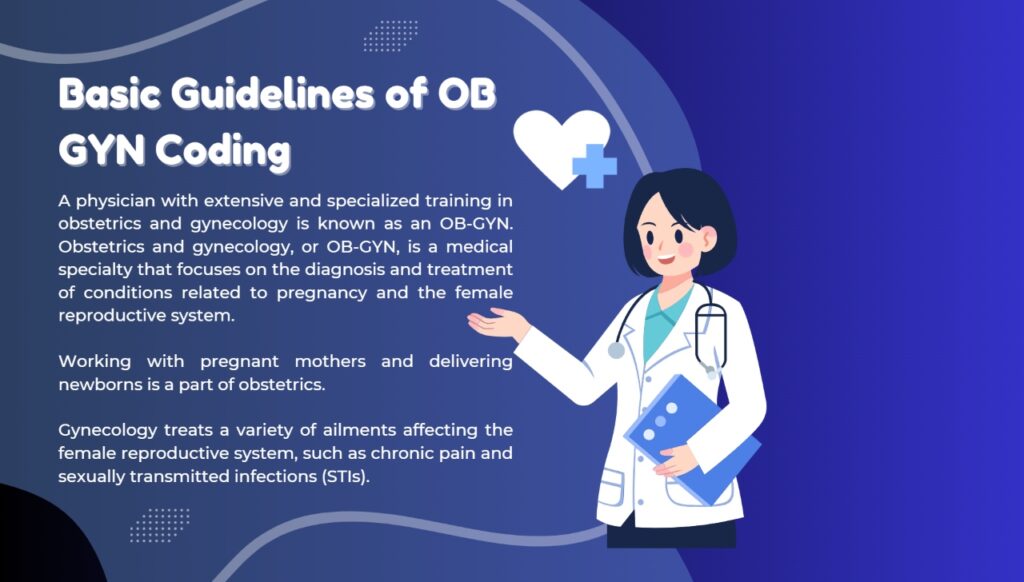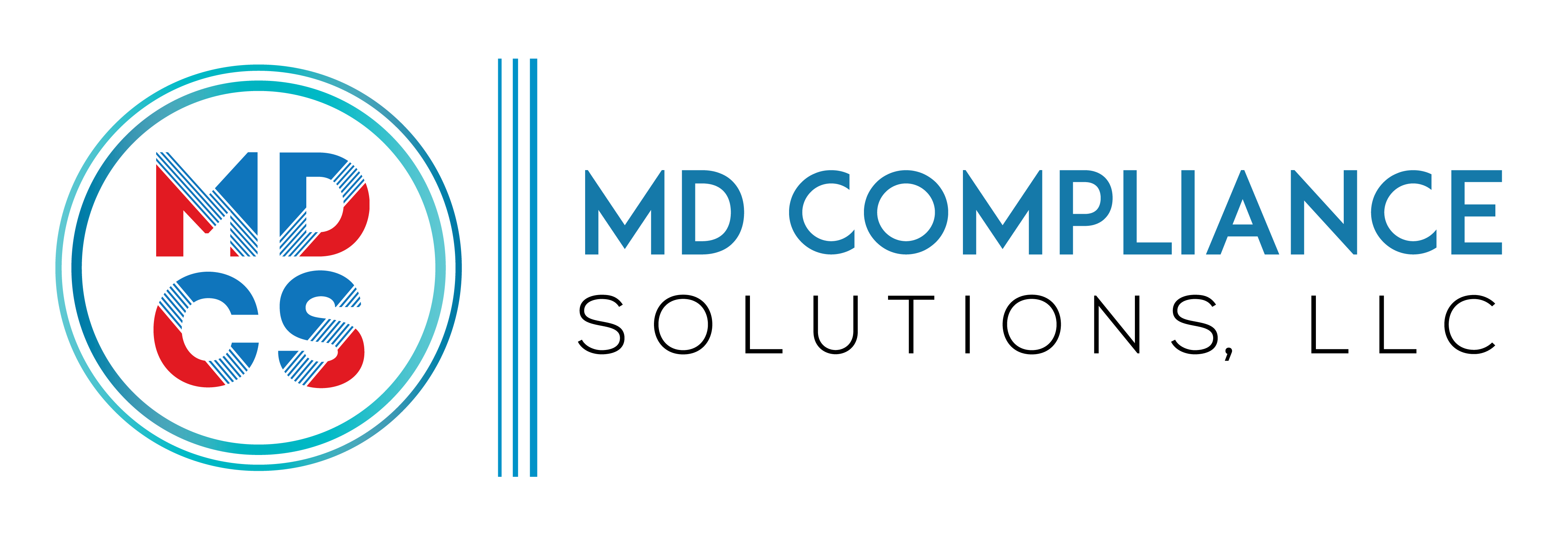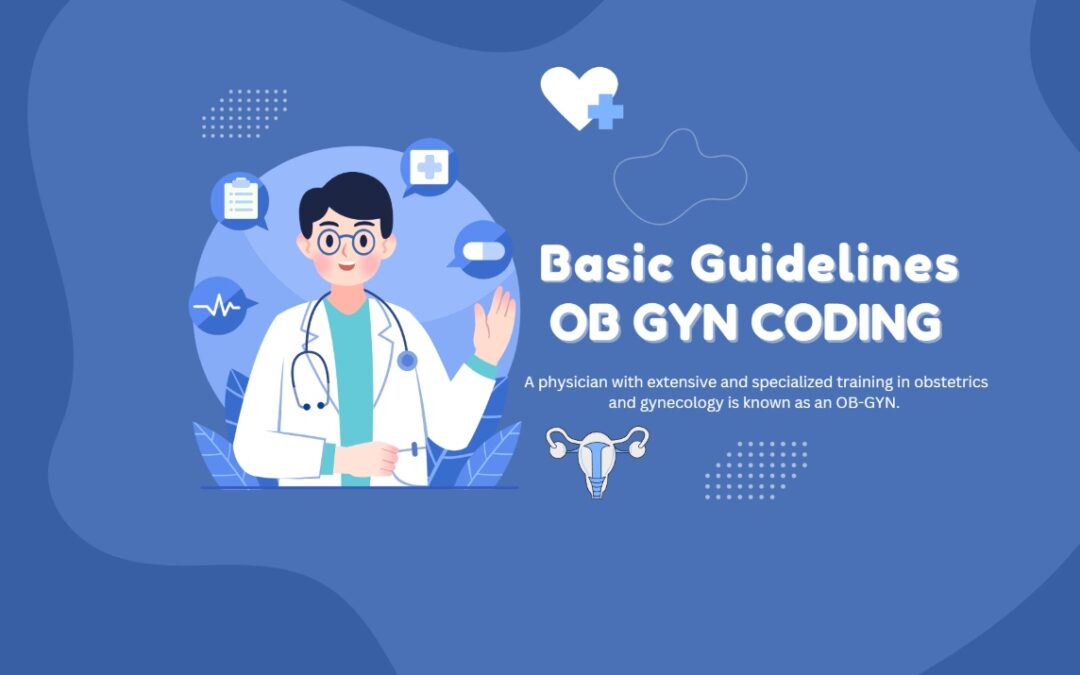Overview of OB-GYN Coding
A physician with extensive and specialized training in obstetrics and gynecology is known as an OB-GYN. Obstetrics and gynecology, or OB-GYN, is a medical specialty that focuses on the diagnosis and treatment of conditions related to pregnancy and the female reproductive system.
- Working with pregnant mothers and delivering newborns is a part of obstetrics.
- Gynecology treats a variety of ailments affecting the female reproductive system, such as chronic pain and sexually transmitted infections (STIs).
Medical coding’s subspecialty of OB-GYN codes procedures and services pertaining to obstetrics and gynecology. It requires a thorough knowledge of medical terminology, specific procedures, and classification rules. This type of coding is crucial for reimbursement processes, system administration, and healthcare communication.
Obstetricians and gynecologists are vital to the health of women. In fact, for many young women, an OB/GYN may be their only regular physician. Because of this, a lot of obstetricians and gynecologists provide a wide variety of medical services, including primary care.
OB-GYN CPT Codes:
The five-digit codes serve as identifiers for the medical, surgical, and diagnostic procedures that medical specialists do. CPT codes are utilized for a range of services in OB-GYN, including basic office visits, prenatal care, and various surgeries like hysterectomies and cesarean sections. The CPT-coded evaluation and management services also include gynecological physical examinations, consultations, and prenatal care. MCC surgical codes, however, are associated with specific gynecological conditions or procedures carried out postpartum. CPT code reports are necessary to determine the appropriate service charge that medical practitioners should charge. Keeping women’s general health and wellbeing in mind, preventive care is an essential component of OB-GYN practice.
OB-GYN ICD-10-CM Codes:
In the OB-GYN specialty, these codes address a broad spectrum of illnesses related to pregnancy, delivery, and the female reproductive system. Pregnancy-related codes are far more extensive, with separate codes for each stage of the pregnancy, issues that may emerge, and illnesses that are unique to pregnancy, like gestational diabetes or pre-eclampsia.
Moreover, ICD-10-CM is used to code gynecologic diseases, including endometriosis, uterine fibroids, and pelvic inflammatory disease. Thus, ICD-10-CM numbers are assigned to common screening procedures such as Pap smears and mammograms. To document the medical necessity of operations and to guide treatment plans, it is imperative that these codes be applied accurately.
Documentation and Coding Compliance
Proper documentation is necessary for OBGYN practices to accurately code and bill medical services. The patient’s health, the services rendered, and any pertinent findings or problems should all be accurately documented in the medical record. The basis for choosing the proper CPT codes and assuring coding rule compliance is this documentation. The American College of Obstetricians and Gynecologists (ACOG), the Centers for Medicare and Medicaid Services (CMS), and private payers are just a few of the organizations whose coding guidelines and requirements OBGYN practices should stay current with.
In order to maintain coding compliance and prevent potential billing problems or denials, these recommendations frequently include precise coding instructions, coding scenarios, and coding revisions that should be followed. To guarantee accurate and compliant coding techniques, OBGYN clinics should also put in place strong billing and coding procedures. These procedures should include staff training, frequent coding audits, and continuing education.
HCPCS in OB-GYN
DME (Durable Medical Equipment), medications, and medical supplies are examples of goods and services that fall outside of CPT and are coded with HCPCS. The OB global codes 59618, 59618, 59510, and 59610 are among them. They consist of all prenatal, intrapartum, and postpartum care. HCPCS codes for contraceptive methods, prenatal supplements, or surgical supplies may be assigned to them in the case of OB-GYN services.
For example, specific HCPCS codes relate to message IUDs or the administration of specific drugs after childbirth. You may use the “22” modifier, for instance, to denote more or enhanced assistance in the event that a lady gives birth to twins. This is essential for accurate invoicing in situations where certain equipment is uncommon and alternative HCPCS codes need to be used.
The Universal Maternity Package
The worldwide maternity package coded in OB-GYN covers standard obstetric care during the antepartum, intrapartum, and postpartum stages. With this package, there is only one CPT code needed for all prenatal appointments, C-sections or vaginal births, and postpartum care. It can be time-consuming because the records must be properly tagged to prevent missing any services, but it also makes the billing process simpler and ensures that all maternity treatments are recorded. A yearly preventative checkup is recommended for women in good health who are not experiencing any problems related to their reproductive system.
Modifiers’ Value in OB-GYN Coding
Since modifiers provide additional information about a treatment, they are crucial to OB-GYN coding. Modifiers are two-digit numerical values that can be added to a CPT code in a variety of circumstances to indicate particular circumstances pertaining to the operation carried out. Bilateral codes, complex procedure codes, and multiple procedure codes are a few examples of these codes.
In order to avoid claim denials and ensure that providers are adequately compensated for the services they offer, modifiers must be utilized effectively. It is instructed to the coder to utilize appropriate stand-alone codes if the services provided do not meet the standards for a complete obstetric package. The individual evaluation and management codes, delivery and postpartum care, antepartum care only, delivery only, and postpartum care only are a few examples of these.
Challenges in OB-GYN Coding
OB-GYN coding poses several challenges when it comes to organizations. OB-GYNs provide a wide range of preventive care services, such as blood tests, ultrasounds, pelvic exams, STI testing, and pap screenings. Similar to this, using correct modifiers requires knowledge of the code set and regulations. A claim may be denied or underpaid as a result of inaccurate coding from incomplete medical record evidence. Collaboration between medical practitioners and coders is therefore necessary to ensure correct registration and coding of the services rendered.
Wrap Up:
An OB-GYN physician focuses on pregnancy and female reproductive health. A vast array of treatments are carried out by them, such as screening for cancer, sexual health issues, and pregnancy-related issues. The complex nature of OB-GYN coding demands precision and meticulous attention to detail due to the utilization of many code systems, such as CPT, ICD-10 CM, HCPCS, and modifiers. Accurate coding ensures that medical professionals are fairly reimbursed while also encouraging the delivery of better patient care.
This is why it is so important to make sure the OB-GYN coders are up to date on the latest coding techniques and to routinely review the coding rules. By staying informed and working together, healthcare providers and coders may efficiently manage the challenges associated with OB-GYN coding and contribute to the effective delivery of care in this vital area of women’s health.

Read More: What is Capitation in Medical Billing?
Reference 1,

